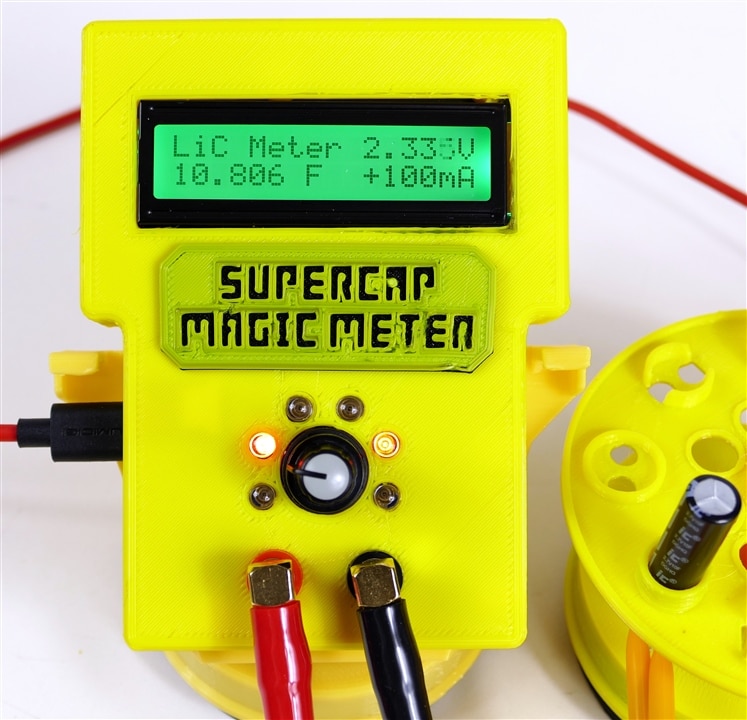Intro
I finally got my SuperCap Magic Meter fully functional. It performs well and has already proved useful in characterizing supercapacitor performance.

The SuperCap Magic Meter Demo
Here is a video showing my first use of the meter on supercapacitors:
I works almost exactly as I had envisioned when I conceptualized the design, which is very gratifying. However I messed up the math a bit and the calibration is off, so look for an updated version of this video.
The Enclosure Design
Although the enclosure fits the components nicely and worked reasonably well, labelling the enclosure was a whole other story - it did not go as planned and I ended up with a not-so-pretty label.
Here is a brief video showing the case design:
Firmware
Here is the firmware for the SuperCap Magic Meter for those who really want to see my spaghetti code:
(I will post here as soon as I add a few comments)
Discussion
The demo video illustrates some things I wasn't expecting, such as ESR values that didn't match the specifications very well and capacitance readings that changed over time. These are included because they are part of the learning curve for supercapacitors.
The meter itself performed repeatably and reasonably accurately - as I had hoped.
I am not using the recommended discharge rate when measuring capacitance, I am using a constant current that represents what I expect my worst case current to be in typical applications.
The changing capacitance is actually explained in Cornell Dubilier literature. The fancy electrodes used in supercapacitors have a phenomenal surface area due to their porous structure, which is why they achieve such high capacitance. The surface area is "several thousands of square meters per gram". However the porous structure necessarily includes a vast array of very tiny nooks and crannies, and pockets and crevices and micropores which are so small that it takes significant time for ions to physically migrate into all locations.
By not following the guidelines for capacitor conditioning prior to measurement, I found my meter actually showed the effect of this slow diffusion of ions. It was not intuitive at first, but now that I've looked into it a bit more, it makes perfect sense.
When in voltmeter mode - measuring just voltage, the meter has time to average 1000 readings and still update the display 3 times per second. I could actually display more digits, but they wouldn't improve real accuracy since the voltage is calibrated with a 4 digit DVM.
Conclusions
The SuperCap Meter works. It measures the capacitance of supercapacitors when all my other meters fail. It is proving to be very useful in measuring and understanding supercapacitors. I am happy to have built this meter and pretty stoked that it works this well.
Next Steps
I still need to measure all the supercapacitors and see what else I can learn in the process.
Then I need to try and cobble together some applications of supercapacitors. Unfortunately some of the key components I ordered for the applications have not arrived, but I'll see what I can manage.
STL Files
Links
The SuperCap Magic Meter Shield
SuperCap Meter Shield Functional Test
SuperCap Magic Meter - Operational
SuperCap Magic Meter - Experimenting with Supercapacitors
Experimenting with Supercapacitors Design Challenge
Cornell Dubilier Supercapacitor Technical Guide

-

baldengineer
-
Cancel
-
Vote Up
0
Vote Down
-
-
Sign in to reply
-
More
-
Cancel
Comment-

baldengineer
-
Cancel
-
Vote Up
0
Vote Down
-
-
Sign in to reply
-
More
-
Cancel
Children